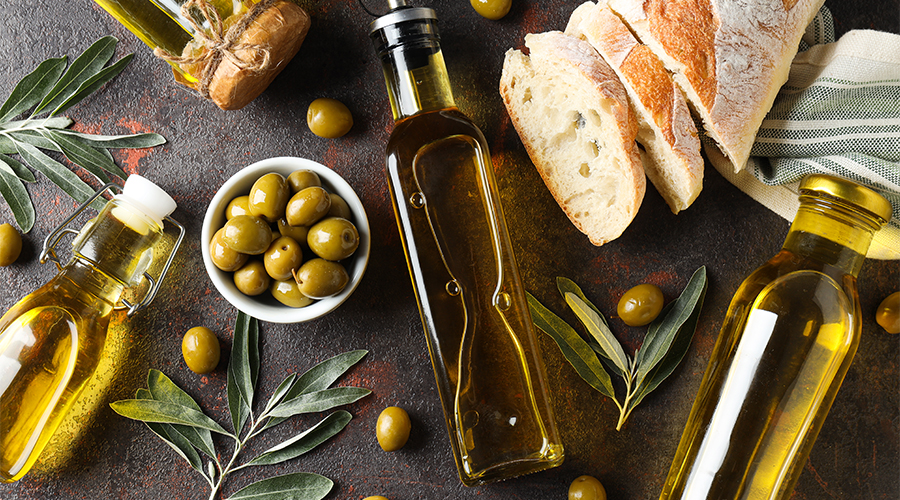From the Pyramids of Egypt, ancient Greek temples, and enchanting theaters in ancient Rome, among all these astounding structures, perhaps the most precious is not hidden underground but grown above: the olive tree. Olive oil, which has played a significant role in nutrition, health, and beauty throughout human history, remains indispensable on our tables today. Have you ever wondered about the classification of this valuable oil? What comes to your mind when you hear “classification of olive oil”? In this article, we explore this mystery with the quality of Niz Olive.
A General Overview: Classification of Olive Oil
Olive oil is known as one of the cornerstones of Mediterranean cuisine. However, knowing that this valuable oil is divided into different qualities and classifications helps us make more informed choices. The classification of olive oil varies according to production methods, chemical components, and taste. Here’s the basic classification of olive oils:
Extra Virgin Olive Oil:
This category represents the highest quality of olive oil. It’s obtained from the first pressing of the olives using a special pressing technique. Produced without any chemical process or elevated temperatures, this oil with exceptionally low acidity offers an excellent aroma and flavor profile. It is the class where natural aromas are most intense and are usually preferred in salads or consumed directly with bread.
Virgin Olive Oil:
While it has features like extra virgin olive oil, its taste and aroma might be slightly lighter. Also, its acidity might be a bit higher than the extra virgin type. It is commonly used for cooking because its aroma undergoes less change at hot temperatures.
Refined Olive Oil:
This category is derived from the refinement of olive oils that have high acidity or flaws in taste and aroma. During this process, the oil’s color, taste, and smell are modified. It is not recommended to be consumed purely and is usually marketed mixed with virgin olive oil.
Riviera Olive Oil:
A mix of extra virgin and refined olive oil, this oil is suitable for both cooking and cold service. Combining the neutral taste of refined oil with the aroma of virgin oil offers both an economical and flavorful option.
This classification guides consumers on which product to use and when. For instance, while making salad dressing, you might prefer extra virgin olive oil; for frying or high-temperature cooking, Riviera oil can be your choice.
It should be remembered that the classification of olive oil isn’t limited to just these four categories. However, these are the basic types of olive oil we encounter daily. When making your choices, consider your needs and expectations to select the most suitable class.
Production Stages of Virgin Olive Oil
Olive oil production is a process known and applied since ancient times. Although modernized with evolving technology, the basic principles remain unchanged. Here’s a step-by-step explanation of olive oil production:
- Olive Picking: The first step of olive oil production is collecting olives from the trees. Olives are typically harvested by hand or with special tools. Oil obtained from olives picked green, a method known as early harvest, is fruitier and more aromatic, while oil from mature olives has a smoother and balanced taste.
- Washing and Cleaning: Harvested olives are washed and cleaned to remove leaves, twigs, and other foreign materials.
- Crushing: The cleaned olives are placed in special stone mills or modern steel equipment for grinding. At this stage, olives are crushed into a paste-like consistency. This paste should have an ideal consistency to facilitate the separation of oil from water and solids.
- Mixing: The paste is mixed under temperature control for a specific period. This step helps oil droplets merge and grow.
- Pressing/Extraction: In modern methods, the paste is subjected to centrifugation under high pressure to separate the olive oil from water and solids. In traditional methods, this paste is pressed to obtain the oil.
- Separation: After centrifugation, the resulting liquid contains olive oil, water, and solids. This liquid is centrifuged again to ensure the oil’s complete separation from the other components.
- Storage: The obtained olive oil is stored in special stainless-steel tanks, protected from air and light. These conditions ensure the oil retains its quality without undergoing oxidation.
- Bottling: Before packaging, olive oil undergoes one last filtration. It’s then bottled or canned in a manner that protects it from air, light, and temperature variations.
These steps represent only the production process of virgin olive oil. Producing different qualities of olive oil may require additional processes. However, virgin olive oil is the most natural oil directly obtained from the essence of olives without undergoing extra processes.
Experience the Quality of Virgin Olive Oil with the Niz Olive Difference
When it comes to the classification of olive oil, each class has its unique taste, aroma, and usage. However, at Niz Olive, we produce only the highest quality extra virgin olive oil. In every drop, you’ll feel the millennia-old history of olive trees, the warm sun of the Mediterranean, and the mastery of handcraft. Niz Olive views the classification of olive oil not just as a production and quality indicator but also as a lifestyle and nutritional philosophy. Every drop of Niz Olive on your table isn’t just a cooking ingredient; it’s also a symbol of health, history, and naturalness.
In conclusion, understanding the “classification of olive oil” requires effort. It also helps us better appreciate the valuable products we place on our tables. It’s essential to remember that the best olive oil comes from naturally grown olives processed with the right methods. Discover top quality with Niz Olive and experience beyond the mere classification of olive oil.



